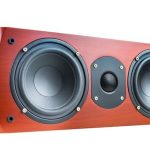Pre-out and line-out are both standard ports used to connect common household audio devices such as amplifiers, subwoofers, or even a preamp. However, today’s devices can be complicated, and both newbies and experts alike can get confused from time to time about which port to use.
In this article, we’ll have a face-off between pre-out vs. line-out in terms of their features and key differences. Fair enough?
Let’s get started with the comparison.
Pre Out Explained
Pre-out is the port used to connect a powered amplifier to an AV receiver that does not come with an inbuilt amp. The purpose of the amp pre-out is to allow audio/video signal to go through your receiver without being amplified. The signal is instead routed to another power source for higher amplification.
The pre-outs transmit volume-controlled/variable signal, which means that you can adjust the output signal level by manipulating the volume control. The ports are similar to RCA jacks, and they use a color coding system to let you know the right plug to use.
A typical connection involves connecting both the speakers and receiver directly to your amplifier, which helps to reduce the strain on the receiver. This way, the receiver functions as a preamp for processing audio signals while the amp offers amplification. However, it is important to stress that a pre-out is not the same as a subwoofer pre-out.
What is a subwoofer pre-out?
A subwoofer pre-out or simply sub out is a port designed to connect a receiver to a powered subwoofer. While a pre-out is designed to accommodate all sound frequencies, a subwoofer pre-out is designed to transmit low (bass) frequencies only.
High-end receivers may have two or three sub outs that allow you to connect more than one subwoofer at once. For you to connect a subwoofer to the receiver, you only need to run an RCA cable from the sub-pre-out at the back of the receiver to your sub’s line input.
What do we like about pre-outs?
- Pre-outs relieve the receiver of the burden of having to drive your speakers
- They enhance the flexibility of the receiver
- Allows for volume control
- An improved speaker system-you can use pre-outs to add multiple channels to your sound system
What don’t we like about pre-outs?
- The incorporation of an extra amplifier may degrade the signal level, especially for sound systems that do not require additional amplification
- Using extra cables can be a bit confusing and dangerous
- This type of connection can be expensive, but worth it
- More components also mean more energy consumption
Line Out
Line out (s) is a type of connection that lets the user connect external speakers to a receiver that does not require external amplification or with one with a preamp. In simple terms, you can use a line out to directly connect the speakers with a fixed signal, and it is normally independent of the volume control. With a line out, you don’t have to worry about signal controls, and the best part is that you can use different speaker systems.
Line in vs. line out
The line out jack of one device is typically designed to be connected to the line in jack of another device. Additionally, the voltage level of both the input and the output is in the same range to ensure a seamless connection. However, the impedance of the input is not matched to that of the output. This engineering helps prevent signal loss or even damage to the line-out circuit.
As a rule of thumb, line inputs offer higher impedance than line outputs, but this will vary depending on the make or model of the equipment. A typical line in connection provides about 10000 ohms or more. On the other hand, line-outs connections have an impedance of between 100 and 600 ohms, but some models may have a lower number.
What do we like about line outs?
- Your home theatre does not require additional amplification
- They are unaffected by the volume control
- Connection is straightforward
- They offer a great way of adding more clarity to your music
What don’t we like about line outs?
- Just like pre-outs, the inclusion of additional cables might cause sound issues, but this will be minimal
- Limited volume control
Parting shot!
Understanding both pre-out and line-out places you in a better position to choose which connection type to use, and the sound output to expect from the setup.
Pre-outs are associated with receivers that use an external amplifier instead of power amplifiers that are inbuilt. With this port, you can connect a powered amplifier independently, without relying on the receiver’s inbuilt amplifier.
On the other hand, you can use a line out if your receiver already has a preamp to avoid unnecessary amplification of the sound signal.
Most high-end receivers feature both pre-outs and line outs, so it is important to do thorough research on the available connections before buying.
If you have any questions or doubts about the two, please let us know in the comments section.
Michael Evanchuk is a San Francisco-based sound engineer with 20 years’ experience installing, troubleshooting, and repairing commercial, automotive, and household sound equipment. Evanchuk owns an auto stereo center, where he offers highly competitive car audio installation and repair services. He has written dozens of articles on different sound engineering topics, all of which have been published in leading journals, blogs, and websites.





